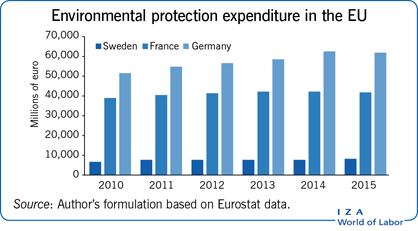Elevator pitch
Environmental regulations such as air quality standards can lead to notable improvements in ambient air quality and to related health benefits. But they impose additional production costs on firms and may reduce productivity, earnings, and employment, especially in sectors exposed to trade and intensive in labor and energy. Growing empirical evidence suggests that the benefits are likely to outweigh the costs.

Key findings
Pros
Stricter air quality regulations have improved ambient air quality.
Ambient air quality and health indicators are linked (e.g. lower mortality rates, reductions in hospital admissions), so air quality regulations contribute to better health outcomes.
Efforts to improve air quality can boost productivity by motivating regulated firms to optimize their production processes and nudging less productive firms out of the market.
Some studies suggest that environmental regulations affect labor demand in a relatively small group of energy-intensive industries while having very small or no effect on employment in service sectors.
Cons
Environmental regulations generally impose additional production costs by requiring pollution abatement equipment in certain industries or by increasing the cost of energy inputs.
Environmental regulations can put affected plants and industries at a competitive disadvantage, reducing productivity and employment, especially in sectors exposed to trade and intensive in labor or energy.
Workers displaced by the regulations in polluting sectors may experience losses in long-term earnings as they make the transition to new jobs.